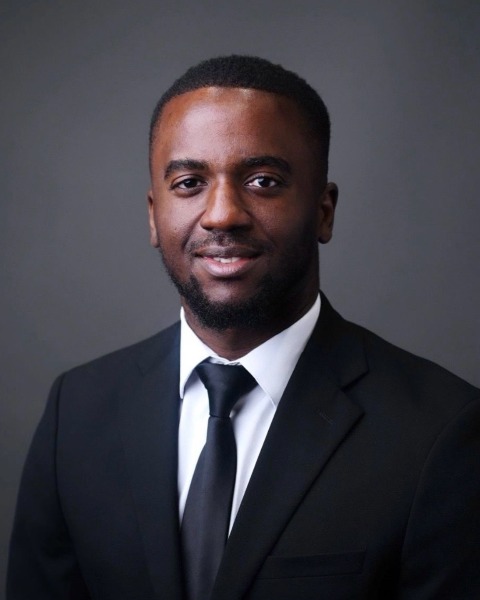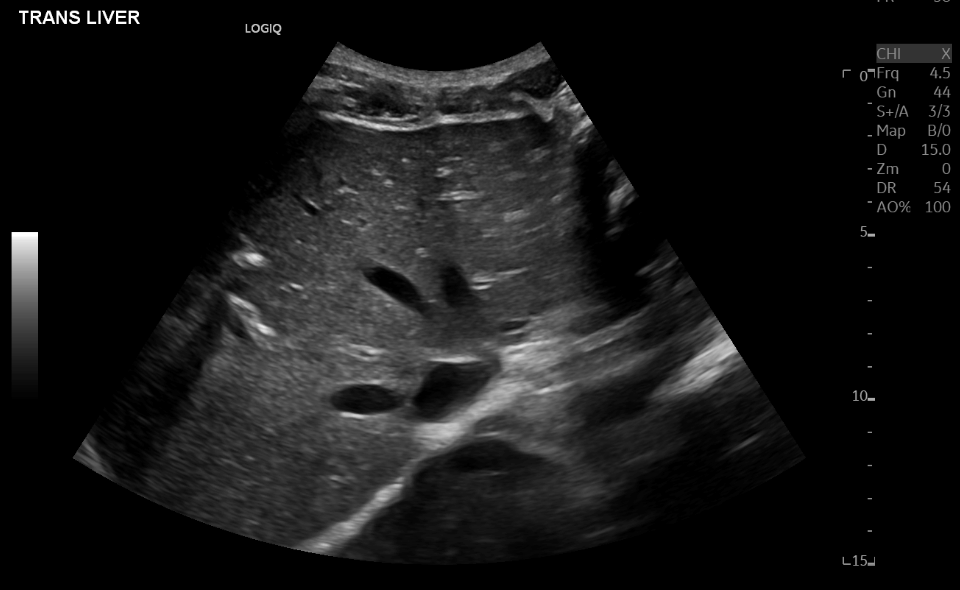Monday Poster Session
Category: Biliary/Pancreas
P2278 - Sump Syndrome Presenting With Pneumobilia: A Rare Clinical Manifestation
Monday, October 27, 2025
10:30 AM - 4:00 PM PDT
Location: Exhibit Hall

Kenechukwu Edoga, MD (he/him/his)
Arkansas College of Osteopathic Medicine
Fort Smith, AR
Presenting Author(s)
Kenechukwu Edoga, MD1, Jacob Joseph, MD2, Cara Stewart, NP2, Etianna Etienne, RN3
1Arkansas College of Osteopathic Medicine, Fort Smith, AR; 2Mercy Hospital, Fort Smith, AR; 3Lonestar College, Fort Smith, AR
Introduction: Sump syndrome (SS) is a rare complication caused by the accumulation of bile, debris, or duodenal contents in the distal common bile duct (CBD), leading to biliary stasis and inflammation. Symptoms may include abdominal pain, nausea, vomiting, postprandial discomfort, and jaundice. SS is most commonly seen after choledochoduodenostomy (CDD), a surgical procedure used before the advent of endoscopic retrograde cholangiopancreatography (ERCP). However, this case involves a patient with no history of CDD, creating a diagnostic challenge.
Case Description/
Methods: A 26-year-old male with a history of asthma, GERD, eosinophilic esophagitis, and hiatal hernia presented with 12 hours of worsening right upper quadrant abdominal pain. He denied fever, vomiting, or bowel changes. Exam revealed localized tenderness without peritoneal signs. Labs were unremarkable, but imaging showed pneumobilia. He was admitted and evaluated by gastroenterology. Esophagogastroduodenoscopy (EGD) revealed a duodenal ulcer with a fistulous opening, raising concern for a spontaneous choledochoduodenal fistula. He was started on a proton pump inhibitor and transferred for surgical evaluation.
Discussion: SS typically follows CDD, where the distal CBD becomes a reservoir for refluxed contents. However, in rare cases, spontaneous choledochoduodenal fistulas—often secondary to duodenal ulcers—can mimic this physiology. Imaging findings like pneumobilia, biliary dilation, or debris suggest the diagnosis. EGD and MRCP confirmed the fistula in this case. Treatment varies based on severity: surgery such as Roux-en-Y hepaticojejunostomy may be required, though conservative management with acid suppression may suffice in mild cases. Our patient responded well to PPI therapy without need for immediate surgery.

Figure: ultrasound image showing pneumobilia
Disclosures:
Kenechukwu Edoga indicated no relevant financial relationships.
Jacob Joseph indicated no relevant financial relationships.
Cara Stewart indicated no relevant financial relationships.
Etianna Etienne indicated no relevant financial relationships.
Kenechukwu Edoga, MD1, Jacob Joseph, MD2, Cara Stewart, NP2, Etianna Etienne, RN3. P2278 - Sump Syndrome Presenting With Pneumobilia: A Rare Clinical Manifestation, ACG 2025 Annual Scientific Meeting Abstracts. Phoenix, AZ: American College of Gastroenterology.
1Arkansas College of Osteopathic Medicine, Fort Smith, AR; 2Mercy Hospital, Fort Smith, AR; 3Lonestar College, Fort Smith, AR
Introduction: Sump syndrome (SS) is a rare complication caused by the accumulation of bile, debris, or duodenal contents in the distal common bile duct (CBD), leading to biliary stasis and inflammation. Symptoms may include abdominal pain, nausea, vomiting, postprandial discomfort, and jaundice. SS is most commonly seen after choledochoduodenostomy (CDD), a surgical procedure used before the advent of endoscopic retrograde cholangiopancreatography (ERCP). However, this case involves a patient with no history of CDD, creating a diagnostic challenge.
Case Description/
Methods: A 26-year-old male with a history of asthma, GERD, eosinophilic esophagitis, and hiatal hernia presented with 12 hours of worsening right upper quadrant abdominal pain. He denied fever, vomiting, or bowel changes. Exam revealed localized tenderness without peritoneal signs. Labs were unremarkable, but imaging showed pneumobilia. He was admitted and evaluated by gastroenterology. Esophagogastroduodenoscopy (EGD) revealed a duodenal ulcer with a fistulous opening, raising concern for a spontaneous choledochoduodenal fistula. He was started on a proton pump inhibitor and transferred for surgical evaluation.
Discussion: SS typically follows CDD, where the distal CBD becomes a reservoir for refluxed contents. However, in rare cases, spontaneous choledochoduodenal fistulas—often secondary to duodenal ulcers—can mimic this physiology. Imaging findings like pneumobilia, biliary dilation, or debris suggest the diagnosis. EGD and MRCP confirmed the fistula in this case. Treatment varies based on severity: surgery such as Roux-en-Y hepaticojejunostomy may be required, though conservative management with acid suppression may suffice in mild cases. Our patient responded well to PPI therapy without need for immediate surgery.

Figure: ultrasound image showing pneumobilia
Disclosures:
Kenechukwu Edoga indicated no relevant financial relationships.
Jacob Joseph indicated no relevant financial relationships.
Cara Stewart indicated no relevant financial relationships.
Etianna Etienne indicated no relevant financial relationships.
Kenechukwu Edoga, MD1, Jacob Joseph, MD2, Cara Stewart, NP2, Etianna Etienne, RN3. P2278 - Sump Syndrome Presenting With Pneumobilia: A Rare Clinical Manifestation, ACG 2025 Annual Scientific Meeting Abstracts. Phoenix, AZ: American College of Gastroenterology.
